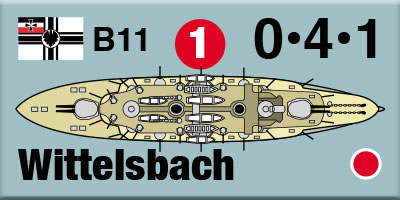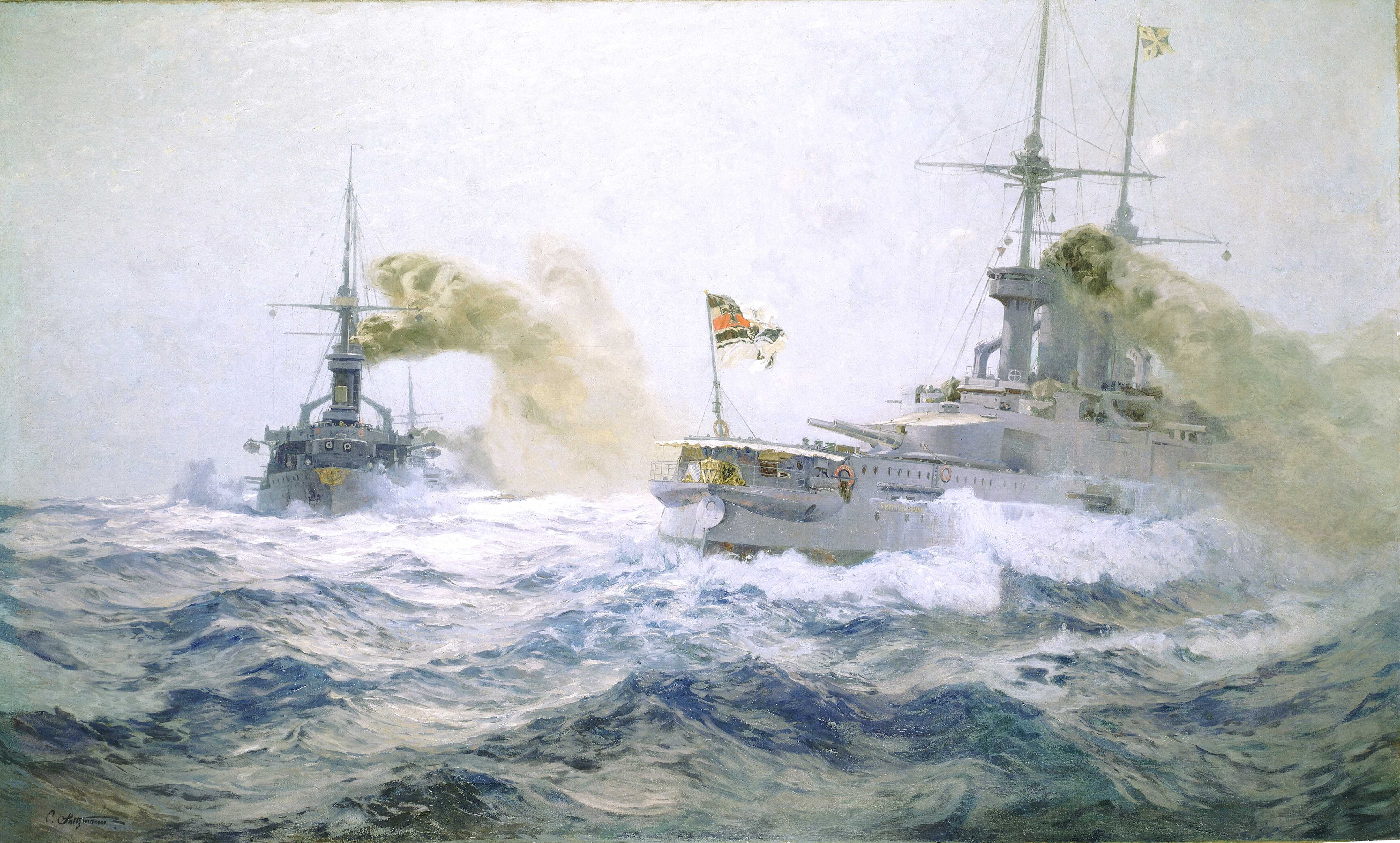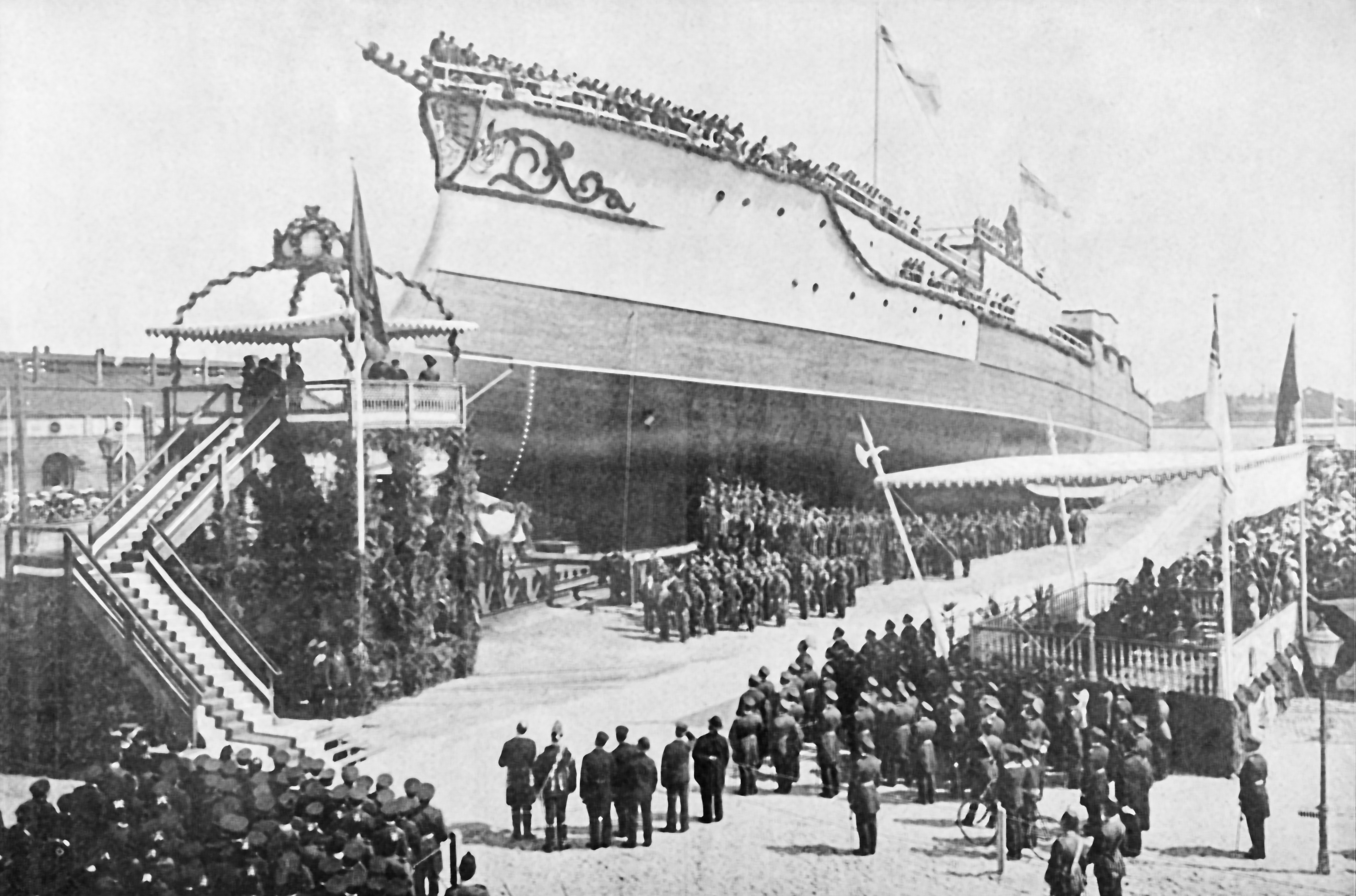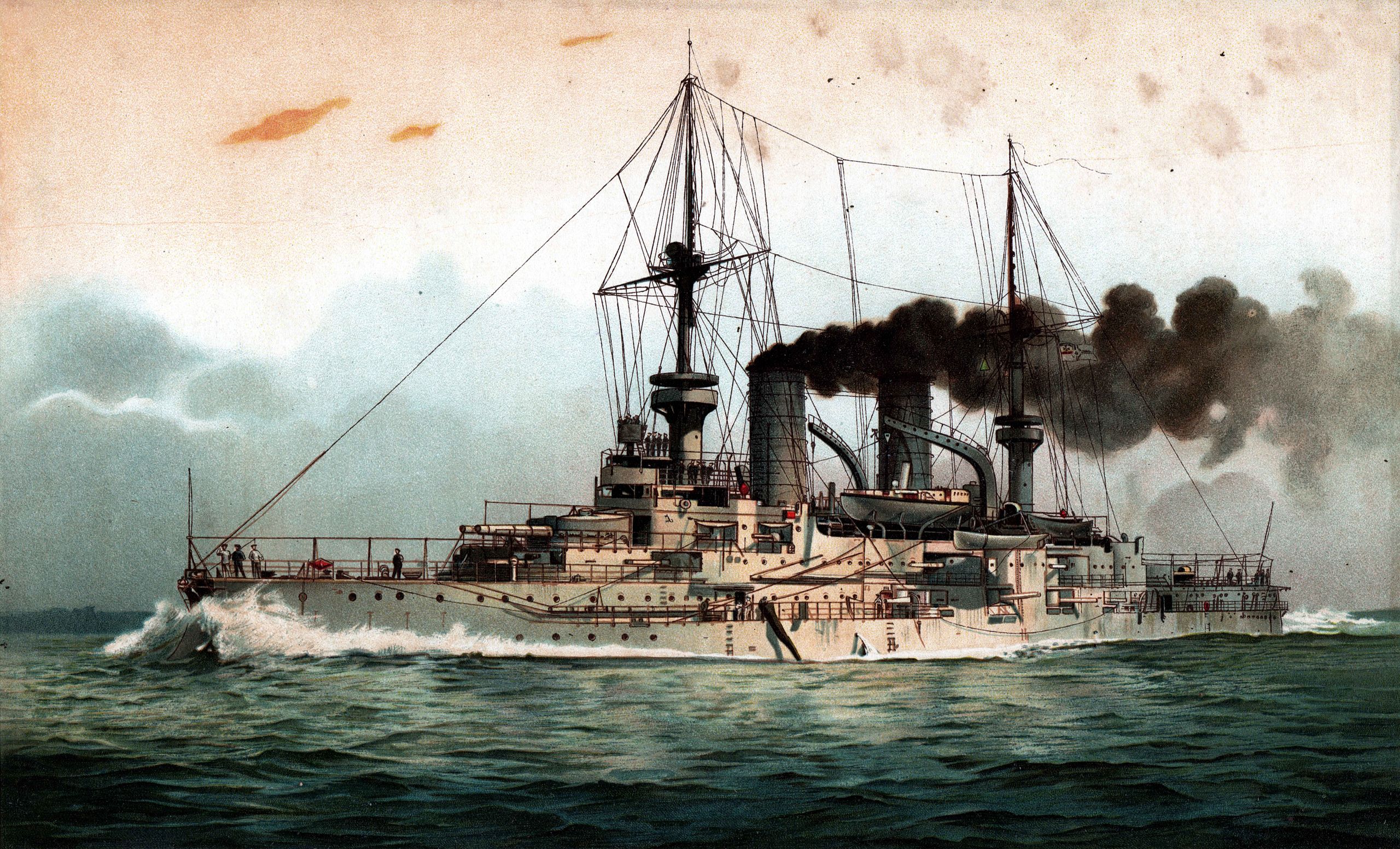| Jutland 2e:
Tirpitz’s Battleships, Part Two
By Mike Bennighof, Ph.D.
September 2024
 The whirlwind political campaign conducted in the summer of 1897 by Alfred Tirpitz to build a powerful German battle fleet had immediate results. The First Naval Law passed the Reichstag in March 1898 over the objections of the Conservative Party, who wished any extra available money to go to the Army, and the Social Democrats, who opposed any increase in military spending. The whirlwind political campaign conducted in the summer of 1897 by Alfred Tirpitz to build a powerful German battle fleet had immediate results. The First Naval Law passed the Reichstag in March 1898 over the objections of the Conservative Party, who wished any extra available money to go to the Army, and the Social Democrats, who opposed any increase in military spending.
In a new twist for the Reichstag the new law extended for three years, meaning that its funding could not be reviewed and rescinded later. It called for a total of 19 battleships, including the 14 already in service, under construction, or authorized. That meant that Tirpitz had the authorization and the funding for five new battleships on top of the three last members of the Kaiser Friedrich III class Tirpitz had finagled into the prior fiscal year program.
Now flush with gold marks, Tirpitz became impatient to spend them before the three-year authorization elapsed. Without a new battleship design on the drawing boards, he pressed to build five more ships to a slightly modified version of the previous draft, the Kaiser Friedrich III class. That bought pushback from the admirals, already unhappy with Kaiser Friedrich III before she had even been commissioned.

Mostly, that came from her unimpressive main armament, four 24cm SK L/40 rifles in two twin turrets, mounted fore and aft. The gun had been promoted for its rate of fire, and at this point with the first ship to carry it fitting out at Wilhelmshaven’s Imperial Dockyard, the awkward loading arrangements and resulting slow rate of fire had not been revealed. But just based on the weight of metal, a 280mm (11-inch) gun promised better range and penetration.
Germany had no modern 280mm gun at the time, and the ship would need extensive re-design to accommodate the hypothetical larger weapon and its turret/barbette structure. That meant delay, and the Navy State Secretary would brook no delay. Tirpitz would allow incremental improvements to the Kaiser Friedrich III design, but steel would meet slipway before the Naval Law’s authorization expired. Three contracts went to private builders, and two to the Imperial Dockyard.

The Wittelsbach class on maneuvers.
The Wittelsbach class (the ships would be named for older German dynasties) would have five ships, just like the previous group. Wittelsbach would be the same size as Kaiser Friedrich III, with the same armament as the previous class: four 240mm main guns, eighteen 150mm secondary guns in an armored casemate, a dozen 88mm guns in shielded mounts on the upper deck, and six underwater torpedo tubes.
Three of the ships met their design speed of 18 knots, with one (Wettin) slightly exceeding it. The two ships built at the state-run shipyard lagged more than a full knot behind their sisters (but they did come in well under the price tags of the private-built ships). Like the preceding class, all of them had the same mixed power plant of fire-tube and water-tube boilers powering triple-expansion engines, with a few minor variations between them. Like Kaiser Friedrich III, they had three propellor shafts rather than the two shafts of most foreign contemporaries.
Internally, they had a greatly-improved armor scheme, taking advantage of the weight savings provided by the new Krupp cemented armor to provide a wide, teak-backed belt that met the armored deck. They had additional protection over their vital spaces - magazines and machinery - and the “honeycomb” internal subdivision for additional survivability. While they had a double bottom, like other ships of their era their underwater protection scheme was not truly designed to resist the power of mines and torpedoes.

Wittelsbach after commissioning.
Outwardly, they had a flush deck as opposed to the lowered quarterdeck of Kaiser Friedrich III, but like their predecessors they had a reputation for easy handling and good performance in a sea swell.
The first three ships, all laid down in 1899, commissioned in October 1902. Their two sisters, laid down in 1900, followed in 1903 and 1904. The laggard, Schwaben, suffered delays in deliveries of key items from the supplier, Krupp (in what was surely a coincidence, Zähringen, built at Krupp’s subsidiary Germaniawerft of Kiel, had the fastest construction time).
Once all had entered commission, the “Active Battle Fleet,” as it was then known, had a homogenous unit of ten very similar ships with identical speed and armament. Eight of them together formed the First Squadron, with one of the older class (Kaiser Wilhelm II) serving as fleet flagship while Tirpitz out-argued fleet commander Hans von Koester and sent Schwaben to the Training Squadron to replace the aged ironclad Friedrich Carl. Schwaben had run aground during her sea trials, exacerbating her already poor speed, and this assignment helped mask the brand-new battleship’s deficiencies.

The jinx ship, SMS Schwaben, is launched at Wilhelmshaven.
The oldest ships of the class had not spent eight years in active service when the first of them, Zähringen, was laid up in 1910. By 1912 all of them were out of service.
They came out of reserve status in August 1914, crewed by reservists and at first attached to the High Seas Fleet. By September they had been transferred to the Baltic Sea, and participated in most of the Baltic Fleet’s operations through the first year of the war. But the attack on the Gulf of Riga in August 1915 would depend on ships drawn from the High Seas Fleet; the outdated if not quite elderly old pre-dreadnoughts no longer had a role. By the end of 1915 four of them had become training ships and one of them converted to serve as a floating prison.

A contemporary lithograph of SMS Mecklenburg.
The preceding Kaiser Friedrich III class had been a poor investment, but to repeat the design meant throwing away money in pursuit of a vague political goal. Knowing the ships to be completely unsuited for naval combat even as he signed their contracts, Tirpitz simply acted out the classic spend-it-or-lose-it mentality of the seasoned bureaucrat. Had the money not been spent on these ships, it could well have been rescinded by the Reichstag after the law’s expiration. And if the funds granted in the 1898 Naval Law had been rescinded, there likely would be very little further spending on battleships. At least that was likely the thinking in 1898. By the time Tirpitz was ready to order another class of battleships, the international situation had altered and the Navy State Secretary did not let the crisis go to waste.
All five ships appear in Great
War at Sea: Jutland, and see action in the Jutland: North Sea 1914 scenario book.
Order Jutland second edition here.
The Jutland Experience
Jutland Second Edition (full game)
Jutland: North Sea 1914
Jutland: Dogger Bank
Journal No. 46: Iron Dogs
Retail Price: $209.96
Package Price: $170.00
Gold Club Price: $134.00
You can order the Jutland Experience right here.
Sign up for our newsletter right here. Your info will never be sold or transferred; we'll just use it to update you on new games and new offers.
Mike Bennighof is president of Avalanche Press and holds a doctorate in history from Emory University. A Fulbright Scholar and NASA Journalist in Space finalist, he has published a great many books, games and articles on historical subjects; people are saying that some of them are actually good.
He lives in Birmingham, Alabama with his wife, three children, and his new puppy. His Iron Dog, Leopold,would have fitted flash baffles on his ships.
Daily Content includes no AI-generated content or third-party ads. We work hard to keep it that way, and that’s a lot of work. You can help us keep things that way with your gift through this link right here.
|
